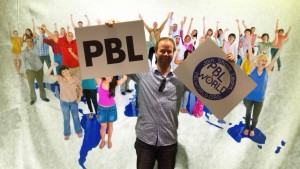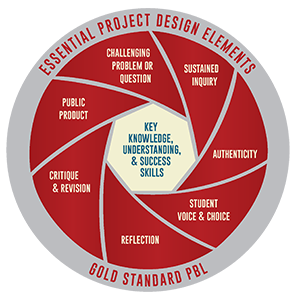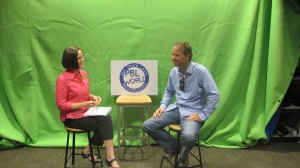Last week I completed the Buck Institute for Education’s Advanced PBL Coaching Academy at PBL World in Napa, California. The Academy began with the Question Formulation Technique, which I have blogged about before. This process ensures that students have input into the design of driving questions. We then dissected Jim Knight’s partnership principles, which underpin the instructional coaching program at my school. We used many protocols during the academy and this was reaffirming, and I took part in a Harkness discussion and a Socratic Circle.
The keynotes at PBL World were outstanding. John Mergendoller introduced us to the new Gold Standard PBL, a revised version of the 8 Essentials model.
Steve Ritz from the South Bronx gave one of the best presentations I have ever heard, attempting to describe it would be an injustice, just watch him here. Ramsay Musallam presented a highly engaging and quite brilliant explanation of how constructivism and cognitive load work together. He showed a gob-smacking clip of John Sweller explaining the limitations of cognitive load theory, which I really must get hold of. Ramsay’s three teaching principles are:
Is lecture happening later?
Are the products public?
Is feedback anonymous?
He showed how filmmakers withhold information to build motivation, citing the mentorship of Yoda in Star Wars and Mr Miagi in the Karate Kid, and showing how delaying the mentoring makes transformative learning possible. If you don’t know anything it’s easy to be curious. If you are given the information, there is nothing to be curious about. The key is withholding just the right amount of information as this is what creates active processing in the brain. He compared the hero’s journey in films with the processes of PBL. The hero’s journey starts with a call to adventure. In PBL the driving question is the call to adventure.
Then Ramsay cited A. Kleon, “If it’s not public it doesn’t exist.” Kids know the value of a public audience, motivation comes from public product. He uses blogging to have students publicly produce work and he described blogging as a medium that can change the world. When Ramsay switched from using Google docs to blogs it enabled students to personalise their products. He also uses Google forms for students to provide anonymous feedback on his teaching.
There were some other workshops on the following days and I didn’t find these as useful, ending up wishing I had also completed the Advanced PBL Leadership Academy which received positive reviews from participants. Next time.
Finally, Suzie Boss interviewed me for a Buck Institute of Education Google Hangout and we had fish tacos for dinner at the Oxbow Market. It was inspiring having an extended one on one conversation with one of the world experts in PBL and innovation in education.
Key takeaways:
The Coaching Academy greatly affirmed our current professional learning strategy of coaching, CFGs, and instructional rounds. The readings will be useful to share and I’m hoping that some of the speakers will be willing to Skype in to our Professional Learning Forum. Ramsay helped me align my thinking on Constructivism and Cognitive Load Theory, and he reminded me of the importance of an inspiring entry event. I was introduced to an EduCreations unit on Mining Personal Histories which looks useful and I was also reminded of my long-standing intent to complete a Taking IT Global online professional development course.
I have largely pushed PBL in grades K-10. I’m now wondering if I could design a PBL unit around beating the high-stakes HSC?



